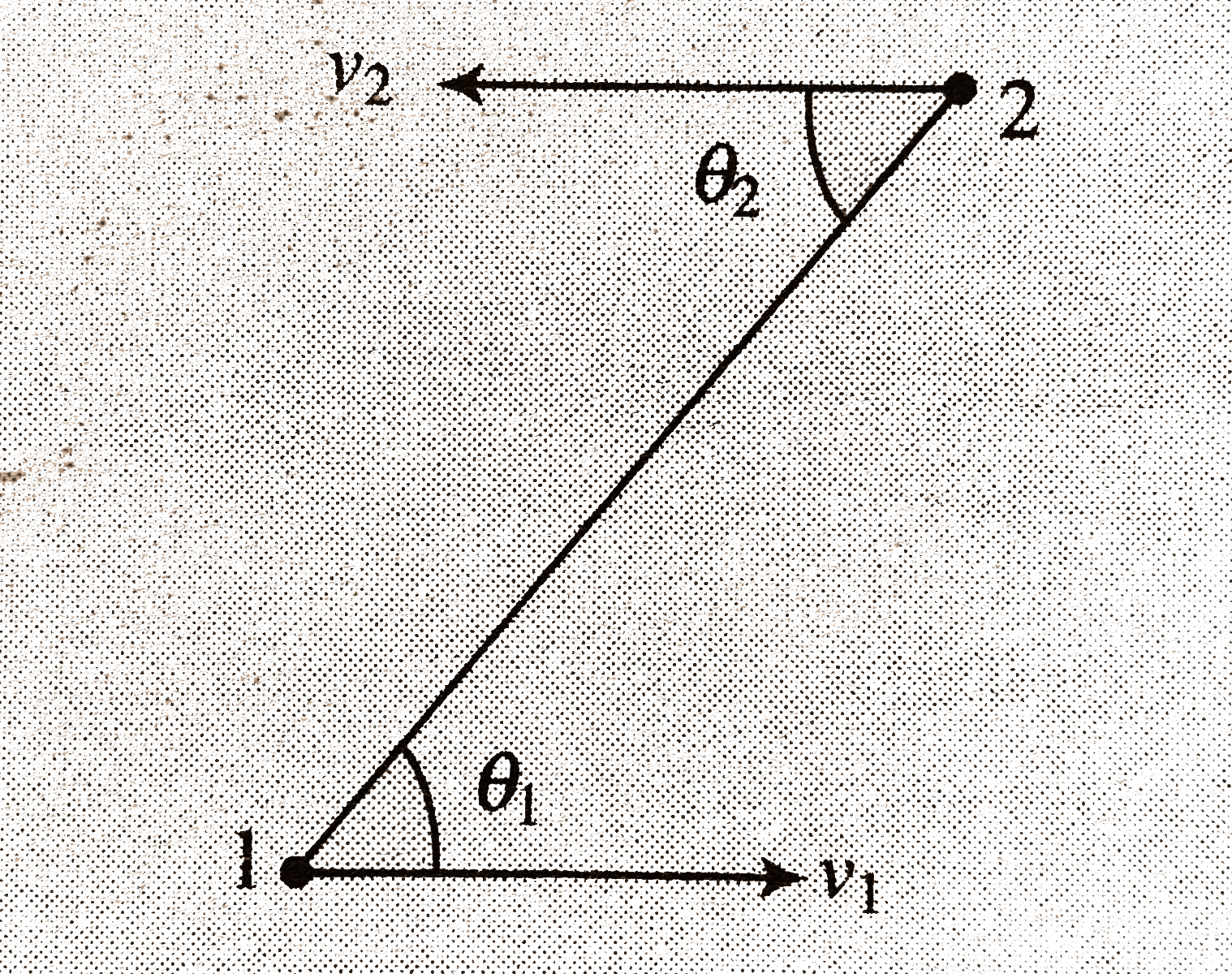Two point masses 1 and 2 move with uniform velocities →v1 and →v2, respectively. Their initial position vectors are →r1 and →r2, respectively. Which of the following should be satisfied for the collision of the point masses?
→r1−→r2=→v1−→v2
→r1−→r2|→r1−→r2|=→v2−→v1|→v2−→v1|
→r1.→v2=→r2.→v2
→r1×→v1=→r2×→v2
For two partical to collides, the direction of the relative velocity of one with respect to other should be directed towards the relative position of the other partical.
The direction of relative position of 1w.r.t. 2 is equal to unit vector of →r1.2.ˆr1.2=→r1−→r2|→r1−→r2|
The direction of velocity of 2 w.r.t. 1.
ˆr1.2=→v2−→v1|→v2−→v1|
For collision of AandB . →r1−→r2|→r1−→r2|=→v2−→v1|→v2−→v1|
Topper's Solved these Questions
- WORK, ENERGY, POWER AND COLLISIONBOOK - A2ZCHAPTER - WORK, ENERGY, POWER AND COLLISIONEXERCISE - AIIMS Questions
20 Videos
- WORK, ENERGY, POWER AND COLLISIONBOOK - A2ZCHAPTER - WORK, ENERGY, POWER AND COLLISIONEXERCISE - Chapter Test
29 Videos
- WORK, ENERGY, POWER AND COLLISIONBOOK - A2ZCHAPTER - WORK, ENERGY, POWER AND COLLISIONEXERCISE - Assertion Reasoning
17 Videos
- WAVES AND ACOUSTICSBOOK - A2ZCHAPTER - WAVES AND ACOUSTICSEXERCISE - Chapter Test
30 Videos
Similar Questions
Two particles 1and2 move with velocities →v1 and →v2 making the angles θ1andθ2 with the line joining them, respectively. Find angular velocity of relative→1.
 .
.
View SolutionA and B are two points with position vectors 2→a−3→b and 6→b−→a respectively. Write the position vector of a point, which divides the line segment AB internally in the ratio 1 : 2.
View Solution
Knowledge Check
Two particles A and B, move with constant velocities →v1 and →v2. At the initial moment their position vectors are →r1 and →r2 respectively. The condition for particle A and B for their collision is
A→r1−→r2=→v1−→v2B→r1−→r2∣∣→r1−→r2∣∣=→v2−→v1∣∣→v2−→v1∣∣C→r1.→v1=→r2.→v2D→r1×→v1=→r2×→v2Two particle A and B, move with constant velocities →v1and→v2. At the initial moment their position vectors are →r1 and →r2 respectively . The condition for particles A and B for their collision is
A→r1×→v1=→r2×→v2B→r1−→r2=→v1−→v2C→r1−→r2∣∣→r1−→r2∣∣=→v2−→v1∣∣→v2−→v1∣∣D→r1.→v1=→r2.→v2If two bodies are in motion with velocity →v1 and →v2:
A|vrel|=√v21+v22B|→–––(rel)|=v1±v2∣Cvre=0Dvrel>c (speed of light)
Two particles of masses m1 and m2 in projectile motion have velocities →v1 and →v2 , respectively , at time t=0. They collide at time t0. Their velocities become →v'1 and →v'2 at time 2t0 while still moving in air. The value of ∣∣∣(m1→v'1+m2→v'2)−(m1→v1+m2→v2)∣∣∣
View SolutionLet →aand→b be the position vectors of A and B respectively. If C is the point 3→a−2→b, then which one of the following is correct?
View SolutionLet →aand→b be the position vectors of A and B respectively. If C is the point3→a−2→b, then which one of the following is correct?
View SolutionL and M are two points with position vectors 2→a−→band→a+2→b, respectively. The position vector of the pont N which divides the line segment LM in the ratio 2:1 externally is
View SolutionTwo particles moving initially in the same direction undergo a one- dimensional , elastic collision . Their relative velocities before and after the collision are →v1 and →v2. Which of the following is not correct?
View Solution
